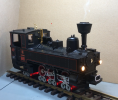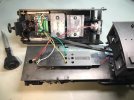David1226
Registered
Many years ago I acquired a 1988 vintage LGB 2070D analogue U-Class, U43, rear bunker version in grey.
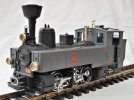
I have carried out several cosmetic changes, including spraying it black, and I now need to fit a decoder. This model is of the three pin connection, pre-digital, type, which I now need to convert to four pins before I can fit a decoder. I am aware of the electrical alterations required to the gearbox to isolate the combined track/motor feed and add a fourth wire in order to provide two track feeds to the decoder and two decoder feeds to the motor.
My problem is that I can find no obvious way of accessing to top of the gearbox and the motor. I am aware that there is an article of converting an old style U-Class, on the Forum, but this is of an even older style U-Class and is of no help to me for this model.
Removing the five screws to remove the bottom of the gearbox only gives access to the gears/axels/pickups which I was hoping not to have to disturb.
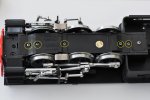
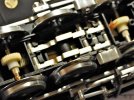
I have studied an on-line exploded parts diagram and it would appear that there are two screws that hold on the top of the gearbox. The rear screw is plainly visible/accessible, but the front screw is covered by part of the frame moulding.
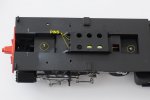
My questions are, is there anyone out there who has already carried out this conversion and can advise me. Is there a relatively simple way to access the gearbox top and motor in order to modify the electrical connections, without having to dismantle/remove the contents of the gearbox/wheels/valve gear. Is anyone aware of any on-line articles that would help with this conversion.
Thanking you in anticipation.
David

I have carried out several cosmetic changes, including spraying it black, and I now need to fit a decoder. This model is of the three pin connection, pre-digital, type, which I now need to convert to four pins before I can fit a decoder. I am aware of the electrical alterations required to the gearbox to isolate the combined track/motor feed and add a fourth wire in order to provide two track feeds to the decoder and two decoder feeds to the motor.
My problem is that I can find no obvious way of accessing to top of the gearbox and the motor. I am aware that there is an article of converting an old style U-Class, on the Forum, but this is of an even older style U-Class and is of no help to me for this model.
Removing the five screws to remove the bottom of the gearbox only gives access to the gears/axels/pickups which I was hoping not to have to disturb.


I have studied an on-line exploded parts diagram and it would appear that there are two screws that hold on the top of the gearbox. The rear screw is plainly visible/accessible, but the front screw is covered by part of the frame moulding.

My questions are, is there anyone out there who has already carried out this conversion and can advise me. Is there a relatively simple way to access the gearbox top and motor in order to modify the electrical connections, without having to dismantle/remove the contents of the gearbox/wheels/valve gear. Is anyone aware of any on-line articles that would help with this conversion.
Thanking you in anticipation.
David

